Retrospective of Sword of the Stars
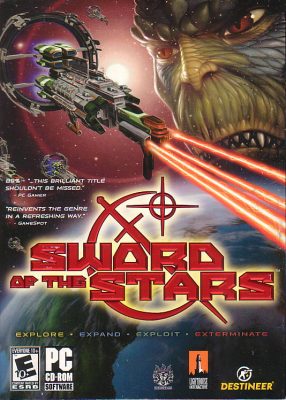 “SolForce’s official motto was “Per Ardua Ad Astra” (Latin: “Through Hardship, The Stars”), but its real motto was “Repensum Est Canicula” (Latin: “Payback is a Bitch”).”
“SolForce’s official motto was “Per Ardua Ad Astra” (Latin: “Through Hardship, The Stars”), but its real motto was “Repensum Est Canicula” (Latin: “Payback is a Bitch”).”
by Patrick S. Baker
Sword of the Stars (Sword) was developed by Kerberos Productions and released in 2006. Kerberos was formed by a group of developers that had worked on Homeworld: Cataclysm, an expansion of the hit game, Homeworld. Homeworld clearly inspired some aspects of Sword.
A 4X (eXplore, eXpand, eXploit, and eXterminate) space game, Sword bore some resemblance to Homeworld, Galactic Civilization, and Reach for the Stars. In the original version of the game, the player selected one of four races to play: The saurian Tarka, the dolphin-like Liir, the insectoid Hive and of course, a united humanity defended by SolForce. Other races were added in later expansion packs and sequels. Each of the races had their own advantages and disadvantages as well as their own technology tree.
The strategic-level of the game was turn-based, with each turn representing a year of game time. The player managed their empire’s resources, researched new technologies, and explored and colonized new star systems. Diplomacy played a crucial role as the player could forge alliances, trade technologies, or engage in interstellar wars with other civilizations.
Space warfare was an important facet of Sword. The player designed their ships by selecting from an array of ship components to generate space vessels specialized for different jobs like exploration, colonization, or war. The player also organized their ships into fleets. Space battles took place in real time and the player could choose between different types of combat postures and even target specific kinds of enemy ships.
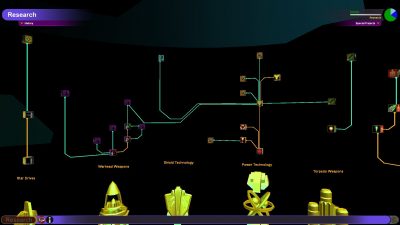
The Metacritic review aggregator has Sword at an average 68 out of 100 for professional reviewers. The user scores are slightly better with a 7.1 out of 10. Both scores are middling at best. The positive reviews generally praised the shallow learning curve, easy of play, re-playability and sheer entertainment value. Negative reviews focused on the less than user friendly interface, with one reviewer calling the design “shoddy”.
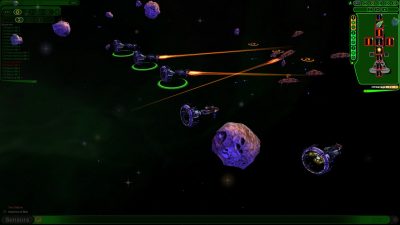
The most negative review was from Tom Chick of 1UP.com. He said the game was “misguided” and was scathing about the interface, particularly the difficulty in navigating around the game’s main screen and technology tree.
A hullabaloo happened when it turned out Chick had written the manual for Galactic Civilizations II, which caused the lead designer of Sword to accused Chick of having a conflict of interest and being unfair in his review of Swords. Chick spoke to this issue saying that the “one-time” payment he received for the manual did not represent a conflict at all.
Sales were good enough that Kerberos developed and marketed a number of expansion packs and sequels. The development team heeded the comments of the critics as well as player feedback when working on the follow-up products.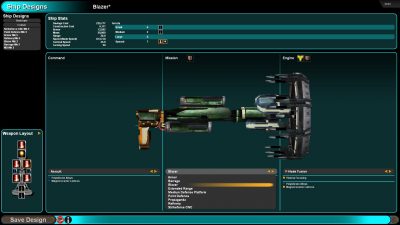
In 2007 Sword of the Stars: Born of Blood was released, introduced another race, the psychic slavers, the Zuul. Also introduced were a new form of strategic movement, new ship sections, new weapons, new technologies, and new scenarios.
This expansion has a slightly better score on Metacritic: 79 for critics and 7.2 from users than the original game. Positive reviews called Born in Blood “very good” and “one of the best epic space strategy games you can buy”. The most negative review called the game too challenging and not well balanced, but still gave it a 72 out of 100.

Sword of the Stars: A Murder of Crows (Crows) was released in 2008. Crows gave the game another new race, the robotic Morrigi. It also included new ship sections, new weapons and technologies, expanded the game play with regards to civilian populations. It added independent worlds, espionage and demands for planetary surrender. Also the expansion gave the game a much improved the Graphical User Interface. Crows has a 75 out of 100 score on Metacritic.
In 2009 another expansion pack was released titled Sword of the Stars: Argos Naval Yard (Argos). Again, Kerberos added new technologies, new weapons, new ship designs and three new scenarios. The fans complained about the cost of the expansion, saying $8.99 (nearly $13 in today’s dollars) was too much for such a skimpy offering and suggested that Agros could have easily been combined with Crows for a single release.
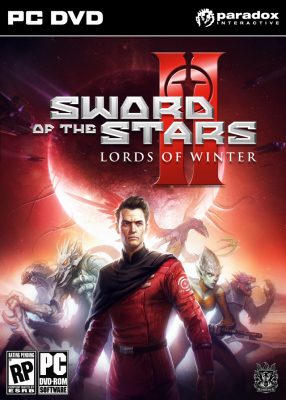 Sadly, just two years later, Sword of the Stars: Lords of Winter was released. Lords of Winter joined the likes of Superpower and Steel Horizons as one of the worst 4X games of all time. The game has an aggregate 44 out of 100 on Metacritic, with one reviewer calling the game “baffling”, “bewildering” and “frustrating”.
Sadly, just two years later, Sword of the Stars: Lords of Winter was released. Lords of Winter joined the likes of Superpower and Steel Horizons as one of the worst 4X games of all time. The game has an aggregate 44 out of 100 on Metacritic, with one reviewer calling the game “baffling”, “bewildering” and “frustrating”.
Another reviewer said it was “fundamentally broken, poorly programmed and a complete mess.” The customer review aggregate was 4.7. Kerberos management quickly realized that Lords of Winter was, to put it politely, a total mess, and issued a public apology.
The next year Kerberos released Sword of the Stars: Lords of Winter (Enhanced Edition) (a better title than Repaired Edition, or Actually Working Edition). The Enhanced Edition was released in a bundle with the first two games and with all the previous expansions.
The Enhanced Edition managed to recover some of Sword’s reputation having a 65 aggregate score on Metacritic. The best review of the game says: “Enhanced Edition is getting there, three steps forward and two steps back.” Another said it is: “slightly better than before.”
In 2013 Kerberos released Sword of the Stars: The Pit, an Role Playing Game set in the Sword of the Stars universe, but besides the name, having nothing to do with the 4X games. In 2014, Sword of the Stars: Ground Pounders, a hex-based, turn-based tactical wargame, set the Sword of the Stars universe was released. Described as a “beer and pretzels” war game. Ground Pounders is at least more closely related to the original 4X games than The Pit.
The Sword of the Stars series has carved a niche for itself in the 4X space genre. Sword of the Stars: Born in Blood was decidedly the peak of the game series. Sadly, Kerberos failed to heed the classic advice of “stopping while you are ahead” and released Lords of Winter, blighting the game’s reputation.
Patrick S. Baker is a former US Army Field Artillery officer and retired Department of Defense employee. He has degrees in History, Political Science and Education. He has been writing history, game reviews and science-fiction professionally since 2013. Some of his other work can found at Sirius Science Fiction, Sci-Phi Journal, Armchair General and Historynet.com
Sources:
1up.com Sword of the Stars Review
Computer Gaming World: Sword of the Stars
IGN: Sword of the Stars Review
Metacritic: Sword of the Stars
Metacritic: Sword of the Stars: Born in Blood
Metacritic: Sword of the Stars II: Lords of Winter (Enhanced Edition)
Mobygames; Sword of the Stars series
Montreal Gazette: “Indie firm battles video game giants”.
Paradox Interactive. “Sword of the Stars Complete Collection”.
Quarter to Three: What’s the deal with…the developer of Sword of the Stars?
Worthplaying.com PC Review – ‘Sword of the Stars: Born of Blood’
